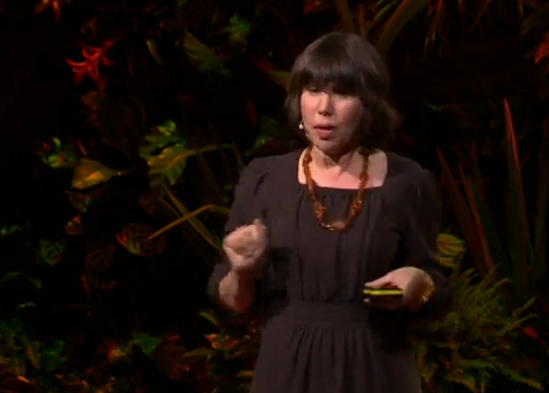Well, what's it like to be this kind of creature? What's it like to be one of these brilliant butterflies who can test five hypotheses in two minutes?
當(dāng)小孩子是什么樣一種經(jīng)歷呢?像那些聰明的蝴蝶一樣,在兩分鐘內(nèi)測試五個假設(shè)?
Well, if you go back to those psychologists and philosophers, a lot of them have said that babies and young children were barely conscious if they were conscious at all.
如果你問心理學(xué)家和哲學(xué)家,他們大部分說了嬰兒和小孩子幾乎在他們的意識方面沒有任何意識。
And I think just the opposite is true. I think babies and children are actually more conscious than we are as adults.
而我的看法確恰恰相反。我認(rèn)為小孩子的意識事實上比我們大人的要強得多。
Now here's what we know about how adult consciousness works. And adults' attention and consciousness look kind of like a spotlight.
我們知道的一些關(guān)于大人的意識的事情。大人的注意力和意識就像一盞聚光燈。
So what happens for adults is we decide that something's relevant or important, we should pay attention to it.
但是大人會自己決定哪些事有關(guān),哪些事重要,哪些事值得我們注意。
Our consciousness of that thing that we're attending to becomes extremely bright and vivid, and everything else sort of goes dark.
我們對所關(guān)注事情的意識變得非常明亮,非常清晰,其它事就反而比較暗淡。
And we even know something about the way the brain does this.
我們甚至大概知道我們的大腦為什么指揮我們這樣做。
So what happens when we pay attention is that the prefrontal cortex, the sort of executive part of our brains,
那當(dāng)我們集中精力時前額的皮層,在我們大腦中起著執(zhí)行的作用,
sends a signal that makes a little part of our brain much more flexible, more plastic, better at learning, and shuts down activity in all the rest of our brains.
發(fā)出一個信號,讓我們腦部的一小部分變得更靈活,更柔軟,更會學(xué)習(xí),讓腦部的其它部分全部休息。
So we have a very focused, purpose-driven kind of attention.
我們的注意力非常集中,有目的。
If we look at babies and young children, we see something very different.
如果對嬰兒和小孩注意力的進(jìn)行觀察,我們會發(fā)現(xiàn)他們完全和我們不一樣。
I think babies and young children seem to have more of a lantern of consciousness than a spotlight of consciousness.
我覺得嬰兒和小孩,他們意識更像一盞燈籠,而不像聚光燈。

So babies and young children are very bad at narrowing down to just one thing.
所以他們不擅長將問題簡化。但他們非常在行在同一時間里吸收不同來源提供的信息。
But they're very good at taking in lots of information from lots of different sources at once.
如果你研究他們的大腦,你就會看到里面有大量的神經(jīng)傳遞素。
And if you actually look in their brains, you see that they're flooded with these neurotransmitters that are really good at inducing learning and plasticity, and the inhibitory parts haven't come on yet.
這些傳遞素對學(xué)習(xí)和柔軟性方面都有很大幫助,而且我們尚未發(fā)現(xiàn)任何帶阻止性的元素。
So when we say that babies and young children are bad at paying attention, what we really mean is that they're bad at not paying attention.
當(dāng)我們說這些孩子注意力不夠集中時,其實是說他們在分散注意力方面不擅長。
So they're bad at getting rid of all the interesting things that could tell them something and just looking at the thing that's important.
那就意味著他們很難將注意力只集中在重要問題上而遺漏那些為他們提供線索的事情。
That's the kind of attention, the kind of consciousness, that we might expect from those butterflies who are designed to learn.
這是一種注意力,一種知覺,我們從那些生來就會學(xué)習(xí)的蝴蝶身上見過的知覺。



